Disclosure: This article contains affiliate links. We may earn a commission from purchases at no extra cost to you, which helps our travel content.
There's something profoundly moving about standing at the crossroads of history and modernity, particularly in places where that transition happened within living memory. Kuwait represents one such remarkable transformation—a nation that, within a single lifetime, evolved from a modest pearl-diving economy to one of the world's wealthiest countries. During a recent consulting project that brought me to the region, I carved out a weekend to explore both Ahmadi, the planned community built by the Kuwait Oil Company in the 1940s, and Kuwait City itself, with its striking blend of Islamic architecture and futuristic skyscrapers. What I discovered was a fascinating narrative of resilience, vision, and cultural preservation that belies the nation's relatively brief modern history.
Ahmadi: The Company Town That Changed a Nation
My journey began in Ahmadi, located about 20 miles south of Kuwait City. Named after the late Sheikh Ahmad Al-Jaber Al-Sabah, this planned community emerged after the 1938 discovery of oil in the Burgan field. What strikes the visitor immediately is the stark contrast between Ahmadi and typical Middle Eastern urban planning—wide, tree-lined streets arranged in concentric circles, colonial-style bungalows with manicured gardens, and an overall sense of orderliness that feels transported from another continent.
The Kuwait Oil Company Museum offers an excellent starting point for understanding the area's significance. Housed in what was once the company's headquarters, the museum chronicles Kuwait's petroleum journey through photographs, equipment displays, and interactive exhibits. I was particularly moved by the black-and-white photographs showing the first oil wells against an empty desert backdrop—a poignant reminder of how quickly this landscape transformed.
Wandering through Ahmadi's neighborhoods reveals an architectural time capsule. The British influence is unmistakable in the colonial bungalows with their distinctive red-tiled roofs and verandas—designed to create natural cooling in the harsh desert climate. Many senior oil executives once lived in these homes, which now house Kuwaiti oil officials and their families. The meticulous urban planning included not just housing but community facilities that were revolutionary for their time: schools, hospitals, clubs, and even a symphony hall.
The Al-Ahmadi Park, with its lush greenery defying the surrounding desert, serves as the community's green lung. As I strolled through the park in the pleasant winter sunshine, I marveled at the engineering feat of creating such verdant spaces in one of the world's most challenging climates.
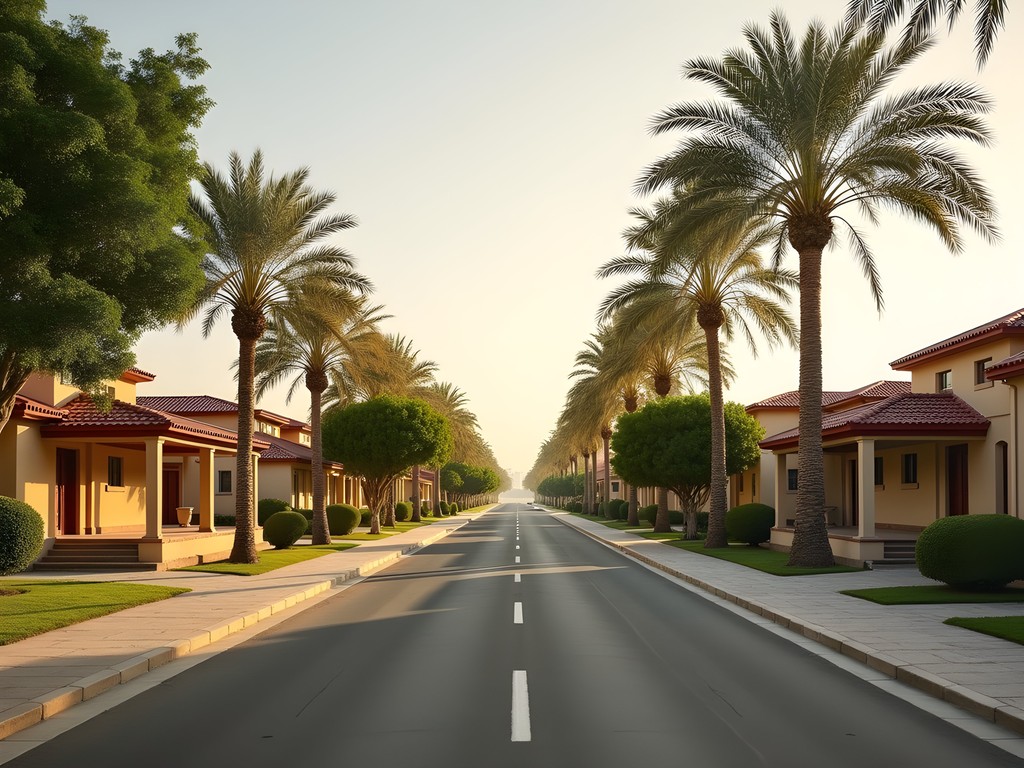
💡 Pro Tips
- Visit the Kuwait Oil Company Museum early in the day to avoid afternoon heat, even in winter.
- Carry your passport for identification, as some areas of Ahmadi remain restricted.
- Hire a local guide to access areas that might otherwise be off-limits to visitors.
The Oil Narrative: From Discovery to Development
To truly appreciate Kuwait's meteoric rise, one must understand the pivotal role of oil discovery. The Oil Display Center in Ahmadi offers an immersive experience into the technical aspects of petroleum exploration and production. Interactive exhibits explain the geological formations that created Kuwait's vast reserves and demonstrate the extraction processes that transformed the nation's economy.
What fascinates me most, as someone who has worked in environmental consulting, is the juxtaposition of cutting-edge technology with environmental challenges. Kuwait has made remarkable strides in minimizing the ecological impact of oil production, particularly following the environmental catastrophe of the 1991 Gulf War when retreating Iraqi forces set fire to over 700 oil wells.
A highlight of my visit was the guided tour to an observation platform overlooking the Burgan Field—the world's second-largest oil field. Standing there with my compact binoculars, watching the nodding donkey pumps against the desert landscape, I felt a profound connection to both geological time and human ingenuity. These fields have produced oil continuously since 1946, fueling not just vehicles worldwide but the entire modernization of a nation.
Nearby, the Al-Ahmadi Refinery offers pre-arranged tours that provide insight into how crude oil becomes the products we use daily. While photography is restricted in many areas for security reasons, the mental images of massive distillation columns and complex piping systems stay with you—testament to the industrial might that transformed Kuwait from a pearl-diving economy to a petroleum powerhouse in mere decades.

💡 Pro Tips
- Book refinery tours at least two weeks in advance through official channels.
- Respect photography restrictions in sensitive industrial areas.
- Wear closed-toe shoes and long pants when visiting industrial sites.
Kuwait City: Where Tradition Meets Modernity
The hour-long drive from Ahmadi to Kuwait City offers a visual narrative of the nation's development—from industrial zones to increasingly modern suburbs, culminating in the spectacular skyline of the capital itself. Kuwait City presents a fascinating architectural dialogue between traditional Islamic designs and ultramodern structures.
My exploration began at the Kuwait National Museum, which provides essential historical context. Though partially damaged during the Iraqi invasion, the restored museum houses impressive archaeological artifacts, ethnographic displays, and a poignant exhibition on the Gulf War. The adjacent Planetarium offers a welcome respite from the afternoon heat with its educational programs about astronomy—a science with deep roots in Islamic intellectual history.
No visit to Kuwait City would be complete without experiencing the iconic Kuwait Towers. These three slender towers, completed in 1979, have become the nation's most recognizable landmark. I took the high-speed elevator to the observation sphere of the main tower, where floor-to-ceiling windows offer a 360-degree panorama of the city and coastline. Using my travel camera, I captured stunning images of the city's evolution—from the traditional dhows in the harbor to the gleaming skyscrapers of the financial district.
The Al Shaheed Park represents Kuwait's commitment to creating green spaces within the urban environment. This beautifully designed memorial park honors Kuwait's martyrs while providing botanical gardens, walking paths, and museums. As dusk fell, I joined locals and expatriates strolling along the illuminated pathways, the city's skyline creating a dramatic backdrop against the darkening sky.
For those interested in Kuwait's cultural heritage, the Sheikh Abdullah Al Salem Cultural Centre represents the nation's largest museum complex. Six distinct museums covering Natural History, Science and Technology, Space, Arabic Islamic Science, and Fine Arts provide enough material for an entire day's exploration. The architecture itself—a contemporary interpretation of Islamic design principles—merits appreciation.
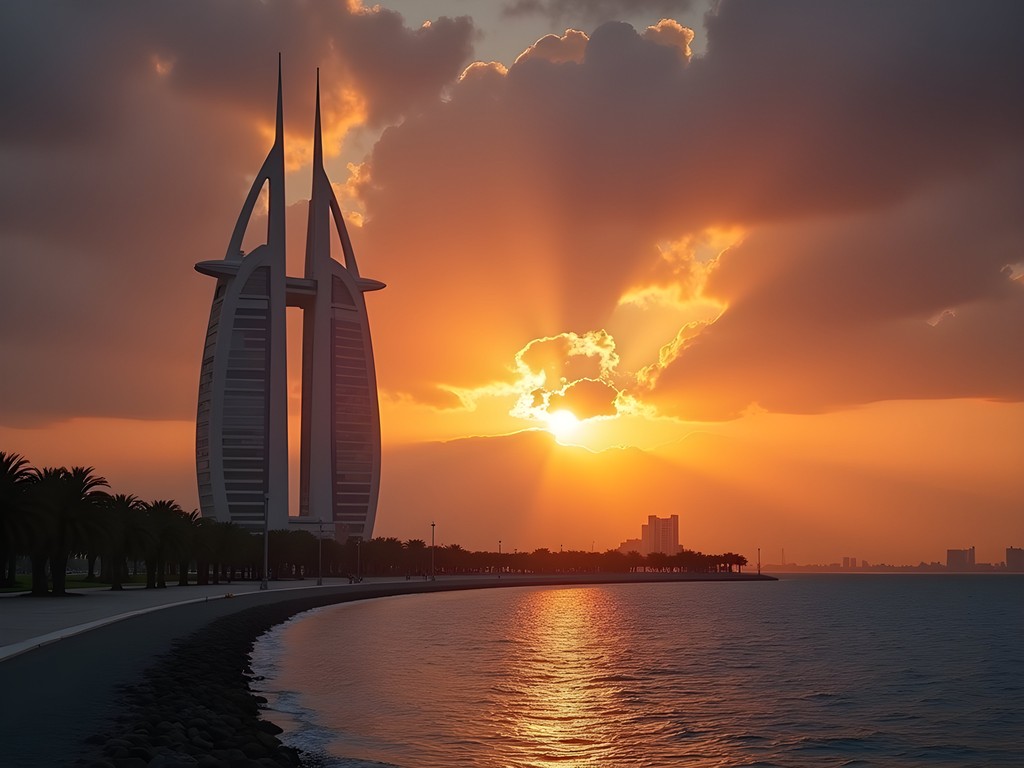
💡 Pro Tips
- Purchase Kuwait Towers tickets online to avoid queues, especially on weekends.
- Visit Al Shaheed Park in the evening when temperatures are cooler and the lighting is spectacular.
- Allow at least half a day for the Sheikh Abdullah Al Salem Cultural Centre—it's vast.
The Cultural Renaissance: Museums and Galleries
What surprised me most about Kuwait was the richness of its cultural offerings, particularly its thriving art scene. The Al M. Gallery in Kuwait City showcases contemporary Kuwaiti artists alongside regional and international talents. During my visit, an exhibition exploring environmental themes through mixed media particularly resonated with my professional interests—artists using discarded industrial materials to create powerful statements about consumption and sustainability.
The Tareq Rajab Museum offers a more intimate cultural experience. Housed in a traditional Kuwaiti home, this private collection includes over thirty thousand items of Islamic art, from intricate calligraphy to Bedouin jewelry. What makes this museum special is the personal touch—the collection was assembled by one family with a passion for preserving the region's cultural heritage.
For opera enthusiasts like myself, the timing of my visit coincided fortunately with a performance at the Sheikh Jaber Al-Ahmad Cultural Centre. This architectural marvel, locally known as the Kuwait Opera House, features a design inspired by Islamic geometric patterns. The acoustics rival those of European venues, and the programming includes both Western classical traditions and Arabic musical performances. I attended a moving rendition of Puccini arias performed by an international cast, followed by traditional Kuwaiti music—a perfect encapsulation of the cultural dialogue happening throughout the country.
Before attending performances, I recommend dining at the cultural center's restaurant, which offers panoramic views of the Gulf and Kuwait City's illuminated skyline. I found my travel blazer was perfect for the evening—lightweight enough for the climate yet appropriate for the elegant setting. While Kuwait's dress code is relatively relaxed by Gulf standards, cultural venues and upscale restaurants expect smart attire.

💡 Pro Tips
- Check the Sheikh Jaber Al-Ahmad Cultural Centre's program before your visit and book tickets online.
- Many museums close between 1-4pm for afternoon break; plan your schedule accordingly.
- Gallery openings often happen on weekday evenings and can be excellent networking opportunities.
Souqs and Shopping: From Traditional Markets to Modern Malls
For those seeking retail therapy with historical context, Kuwait's souqs offer a sensory immersion into traditional commerce. Souq Al-Mubarakiya, dating back 200 years, remains the heart of old Kuwait City. Navigating its narrow alleyways, I discovered shops selling everything from handwoven carpets to aromatic spices and traditional dress. The fish market provides fascinating insight into local culinary traditions, while the adjacent vegetable market bursts with color and activity.
What makes Al-Mubarakiya special is its preservation of traditional commercial practices. Many shopkeepers are third or fourth-generation merchants, and bargaining remains an expected part of the transaction. I purchased a beautifully crafted dallah (traditional coffee pot) after a good-natured negotiation that included several rounds of mint tea—a reminder that shopping here is as much about cultural exchange as commerce.
For those interested in contemporary shopping experiences, The Avenues Mall represents Kuwait's modern retail evolution. This massive complex houses over 800 stores, including international luxury brands and local boutiques. The Grand Avenue section mimics European streets complete with a simulated changing sky, while the SoKu district showcases younger Kuwaiti designers and entrepreneurs.
As someone who appreciates the intersection of culture and commerce, I was particularly interested in Al Othman Museum of Vintage Automobiles. Located near The Avenues, this private collection showcases over 30 meticulously restored classic cars, many with connections to Kuwait's oil history. The 1952 Rolls-Royce that once transported oil executives makes a powerful statement about how petroleum wealth transformed local transportation from camels to luxury automobiles in a single generation.
Before leaving Kuwait, I made sure to pick up a travel journal at one of the excellent bookstores in 360 Mall. I've found that maintaining detailed notes during my travels helps me craft more meaningful blog posts later, and this particular journal's quality paper handles the fountain pen ink I prefer without bleeding through pages.
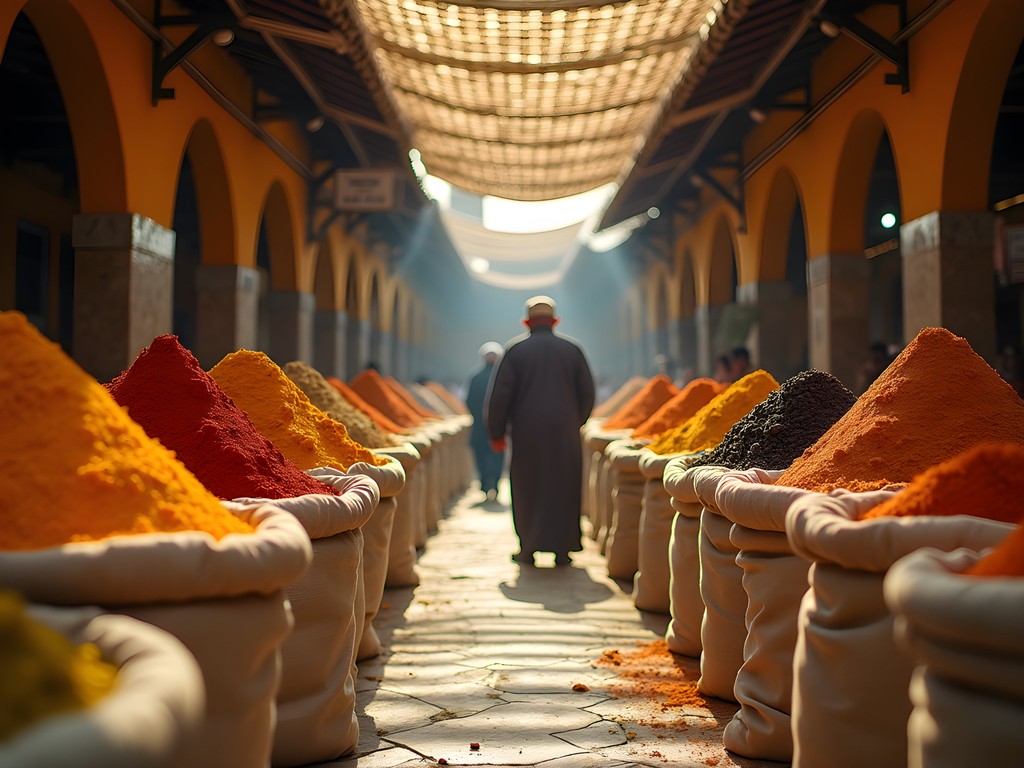
💡 Pro Tips
- Visit Souq Al-Mubarakiya in the morning hours when it's less crowded and temperatures are milder.
- Carry cash for traditional souqs; while credit cards are widely accepted in modern establishments, many traditional merchants prefer cash.
- Learn basic Arabic phrases for greeting and thanking—they're greatly appreciated during market transactions.
Final Thoughts
As my weekend exploration of Ahmadi and Kuwait City drew to a close, I found myself reflecting on the extraordinary narrative of transformation I had witnessed. In less than a century, Kuwait evolved from a modest pearl-diving community to an oil powerhouse and now to a nation actively diversifying beyond petroleum through education, culture, and tourism. What impressed me most was not just the gleaming modernity but the thoughtful preservation of heritage—a balance that many rapidly developing nations struggle to achieve. For business travelers with limited free time, a weekend offers just enough opportunity to scratch beneath the surface of Kuwait's fascinating history and culture. Whether you're drawn to industrial heritage, architectural marvels, or cultural experiences, this compact nation delivers surprising depth and accessibility. I left with a profound appreciation for Kuwait's journey and a desire to return for deeper exploration of both its desert landscapes and cultural treasures.
✨ Key Takeaways
- Kuwait offers a unique perspective on rapid modernization while maintaining cultural identity
- Winter months provide ideal weather conditions for exploring both indoor cultural sites and outdoor historical areas
- The contrast between planned oil community Ahmadi and cosmopolitan Kuwait City tells a compelling development story
📋 Practical Information
Best Time to Visit
November through March, when temperatures are mild (65-75°F/18-24°C)
Budget Estimate
$150-250 per day including mid-range accommodations, transportation, meals, and attraction fees
Recommended Duration
2-3 days for essential sites, 4-5 days for comprehensive exploration
Difficulty Level
Easy

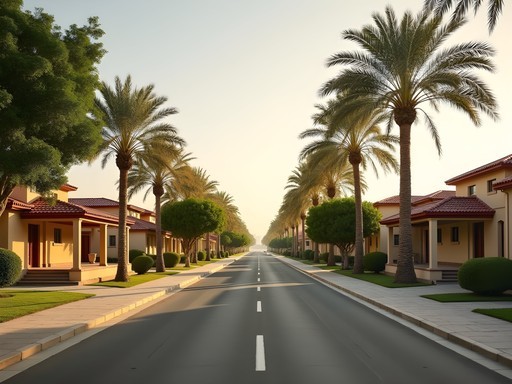
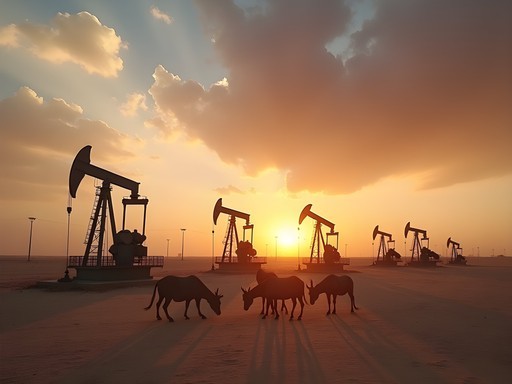
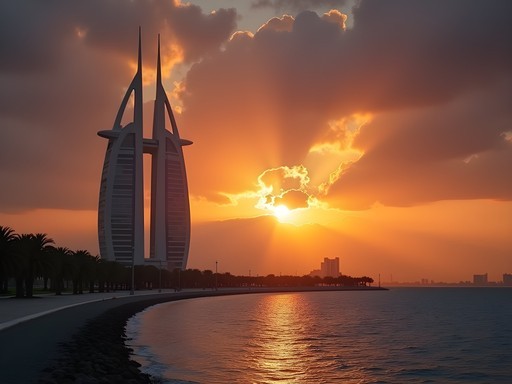

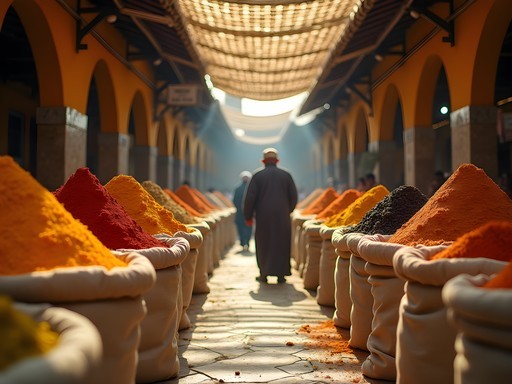








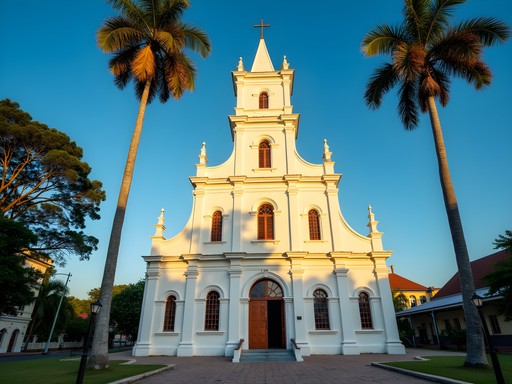
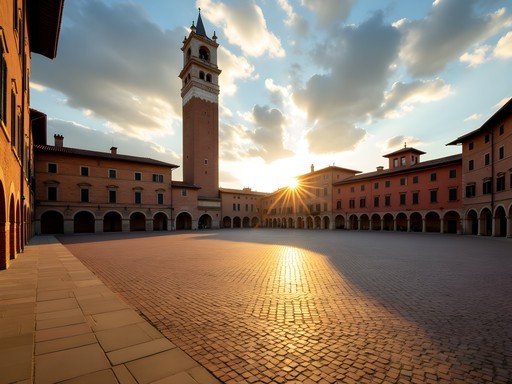
Comments
HistoryBuff72
I visited Kuwait last year and was similarly struck by the rapid transformation. The Kuwait National Museum's exhibits on pre-oil life compared to today were eye-opening. Did you get a chance to visit the Al-Shaheed Park? It's another great example of how they're creating green spaces in the midst of all that development. The contrast between Ahmadi's orderly British-style planning and Kuwait City's more organic growth is fascinating too.
Benjamin Smith
Al-Shaheed Park was beautiful! I spent an evening there watching families enjoy the space. You're right about that contrast between Ahmadi and Kuwait City - it's like seeing two different urban planning philosophies side by side.
TravelWithMaria
Really cool post! Never thought of Kuwait as a travel destination but you've changed my mind.
Amit Sullivan
Benjamin, this brought back wonderful memories of my time exploring Kuwait! I was particularly moved by the contrast between Ahmadi's orderly British-influenced layout and Kuwait City's gleaming modernity. What struck me most was visiting the Al-Shaheed Park and seeing how they've documented their journey from pearl diving economy to oil wealth. The older Kuwaitis I met shared incredible stories about witnessing this transformation firsthand. For anyone planning to visit, I highly recommend the Kuwait National Museum to understand this historical context before exploring further. Also, don't miss the traditional dhow harbor - it's a powerful reminder of Kuwait's maritime past that existed long before oil was discovered. The juxtaposition of ancient wooden boats against the modern skyline perfectly captures Kuwait's fascinating journey.
happytime294
Al-Shaheed Park is amazing! Did you try the restaurant there? The food was incredible and the views at sunset were perfect.
desert_wanderer
Going to Kuwait in November! Is Ahmadi worth a full day trip? And did you need any special permission to visit the oil facilities?
Benjamin Smith
Definitely worth a full day! The Oil Museum needs advance booking (just email them a week before). The residential areas are freely accessible, but some active facilities are restricted. The heritage buildings and the planned community layout are fascinating even without entering any restricted zones.
desert_wanderer
Perfect, thanks for the tip about booking ahead!
Frank Garcia
This is such a fascinating perspective on Kuwait's development! I backpacked through the Gulf last year but completely missed Ahmadi - big mistake, it seems. The oil narrative really shaped everything in the region, but I love how you've highlighted the human stories behind the industrial development. One question: how did you find the public transportation between Ahmadi and Kuwait City? I relied mostly on rideshares when I was in Kuwait and wondered if I missed out on a more authentic experience using the buses or trains.
Benjamin Smith
Thanks Frank! The public buses between Kuwait City and Ahmadi are actually quite reliable, though not very frequent. I used the KPTC buses and found them to be clean and affordable. That said, for some of the more remote oil sites, I did end up using rideshares too.
Frank Garcia
That's good to know! I used Lonely Planet Kuwait but it didn't have much detail on getting to Ahmadi specifically. Definitely adding it to my list for when I return to the region.
photogal2645
Love how you captured the contrast between old and new Kuwait! The architecture shots are stunning.
Benjamin Smith
Thanks so much! The juxtaposition of traditional and modern buildings really tells Kuwait's story better than words can.
photogal2645
Absolutely! Did you get to visit the Grand Mosque too?
Benjamin Smith
Yes! It was breathtaking. I actually have a separate post coming soon focused just on Kuwait's religious architecture.
luckydiver
Great post! How hot was it when you visited? Trying to figure out the best time to go.
hikingperson
Planning a trip to Kuwait in November. Is Ahmadi worth a day trip from Kuwait City? And do you need special permission to visit since it's an oil company town?
Amit Sullivan
Absolutely worth visiting! No special permissions needed for most areas - it's quite open now. The Heritage Village and Oil Display Center are fascinating. Just take a good travel guide as some attractions have limited opening hours. I'd recommend hiring a driver for the day, public transport is limited between cities.
hikingperson
Thanks for the tips! Will definitely add it to my itinerary.
happytime294
Love this post! My grandfather actually worked for Kuwait Oil Company in the 60s and told amazing stories about Ahmadi. The planned community was so ahead of its time! Those tree-lined streets in the middle of the desert still look beautiful today.
Benjamin Smith
That's incredible! The KOC legacy runs deep in Ahmadi. If you have any old photos from your grandfather's time there, I'd love to see them. The transformation from then to now is remarkable.
smartmaster
Fascinating read! Kuwait's transformation in such a short time is mind-blowing. The contrast between old and new must be incredible to witness firsthand.
Amit Sullivan
It truly is remarkable. I visited Kuwait back in 2018 and was struck by how seamlessly they blend ultra-modern architecture with their cultural heritage. Benjamin really captured that essence here.
smartmaster
Thanks Amit! Did you get to visit Ahmadi too? Seems like the company town aspect would be interesting to see.
Venture X
Premium card with 2X miles, $300 travel credit, Priority Pass